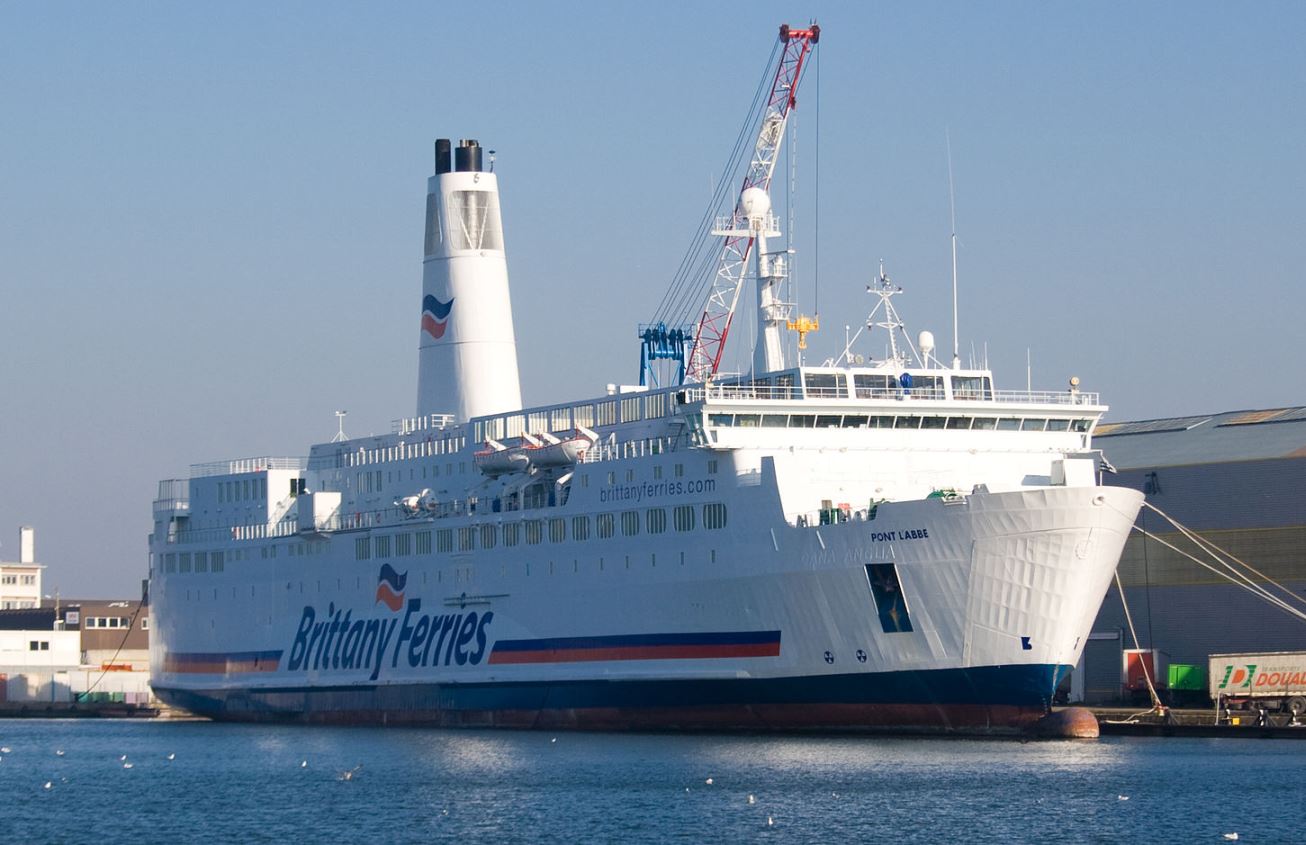The Léon farming community and their leader Alexis Gourvennec were an organised and militant group. Throughout the 1960s, their protests and proposals were powerfully effective. So when Sica, Brittany’s agricultural cooperative based in Saint-Pol-de-Léon and pro-Brittany lobby group CELIB (Comité d'étude et de liaison des intérêts bretons) joined forces in 1968 to put forward a proposal for three building projects, a vigilant central government was quick to agree to their request, after the events of civil unrest in May of that same year. They wanted a new road network for Brittany, a university in Brest and a deep water port off the coast of Roscoff so farmers could export their produce to the British Isles 80 miles away. “We could see that historically, the sea had always been a gateway to great wealth”, Alexis Gouvernnec told the cultural review ArMen in January 1996. Work started at Bloscon port in 1970 to build a ferry terminal, but no ship-operator showed interest in taking the risk to establish a route between Brittany and Great Britain.
Enter fellow Breton and merchant navy captain Jean Hénaff, who was concerned by the sudden rise in unemployment of sailors, after the end of French colonial rule in West Africa. Hénaff believed that if ship-operators had no jobs to offer, the solution was to create more ship-operators. In the spring of 1972, Finisterre’s Chief Councillor, André Colin, organised a key meeting in the Chamber of Commerce and Industry offices in Morlaix between Gourvennec the farmer, and shipless captain, Hénaff, during which they decided to create a new, anonymous ship-operator: Bretagne-Angleterre-Irlande (BAI). Its headquarters were based in Quimper, rue Saint-Mathieu. Between them, the three founders had a combined capital of 15000 francs. But they would need 18 million to bring home the ship Jean Hénaff had found in Vigo, Galicia. Built originally for the Israeli navy, but no longer in use, it was a good fit for the new company. They needed to find the money. Alexis Gourvennec threw himself into persuading Brittany’s agricultural and business sectors to take what was most certainly a risk and invest in the project. He raised 5 million francs and the banks followed suit, financing the remaining sum. The ship was christened the Kerisnel, after the vegetable market and Sica’s general headquarters. Two years later, “farmer-managing-director” Alexis Gourvennec became President of BAI, renamed Brittany Ferries, and persuaded Sica to foot the bill for a new ferry, the Penn ar Bed.
The Good Ship Cauliflower
On 18th December the Kerisnel docked for the first time at Bloscon port. Two days later, she set sail for Plymouth cargo-free. In early January, three lorries crossed the Channel. Great Britain had just joined the European single market, but nevertheless there were some early setbacks. In 1973, the Kerisnel transported more than five thousand lorries. But a different kind of demand, that of tourist travel, was also emerging, and the Kerisnel, with its 12 cabins, was ill-equipped. The Penn ar Bed however, could transport up to 500 people and was brought into service in early 1974. During the same period, Jean Hénaff established a route between Saint-Nazaire and Vigo, to which the Kerisnel was transferred for Citroën in particular, which had factories in both Rennes and the Galician port. In 1974, BAI transported 83,000 passengers and more than 8,000 vehicles. Furthermore, Alexis Gourvennec pulled off the perfect PR stunt over the summer, organising the transport of the Tour de France convoy from Roscoff to Plymouth.
In the wake of its success, Brittany Ferries prepared to open another cross-Channel route, this time from Saint-Malo. When TT. Line, a German company operating under the Cypriot flag, which had originally refused to join forces in Roscoff some years earlier, publicly announced its intention to open a cross-Channel route, also from Saint-Malo, Alexis Gourvennec denounced the Saint-Malo Chamber of Commerce and Industry’s betrayal, since it had in fact already agreed in 1976 to open a route with Brittany Ferries. In Saint-Malo, people were wary of the ambitious farmers from Saint-Pol-de-Léon, who occupied the quayside in protest… The authorities didn’t intervene. TT. Line’s ship turned around, and the Germans abandoned their plans.

In 1978, a new route opened to Ireland. The Breton bell player, or sonneur, Polig Montjarret was a regular passenger and helped to establish cultural connections which would boost traffic between Brittany and the Emerald Isle. In the 1980s, Brittany Ferries established a presence in ports in Normandy and opened a second logistics centre in Ouistreham. Today the Portsmouth/Caen route is the busiest in terms of passenger numbers. The company’s expansion was supported by local communities. Alexis Gourvennec never shied away from asking for large public investments for the ship-operator. In 1982, Région Bretagne, several departments and the bank Crédit agricole joined together as a semi-public company to capitalise the business. Their neighbours in Normandy would soon join them.
Since its beginnings, the company, which is still managed by the “farmer ship-operators” from Léon, has seen spectacular growth. In 2015, it had ten ships in operation and announced a turnover of more than 300 million euros.



